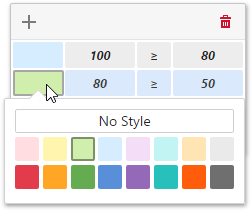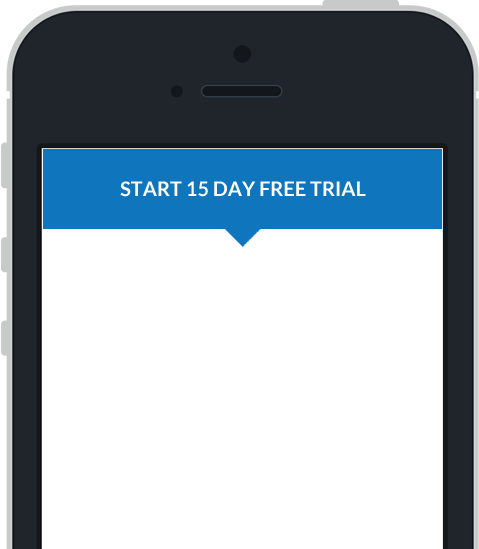Conditional Formatting
The Web Dashboard allows you to format dashboard item elements whose values meet a specified condition. This feature allows you to highlight specific elements using a predefined set of rules.
To learn more about the specifics of using a conditional formatting feature for different dashboard items, see the following topics.
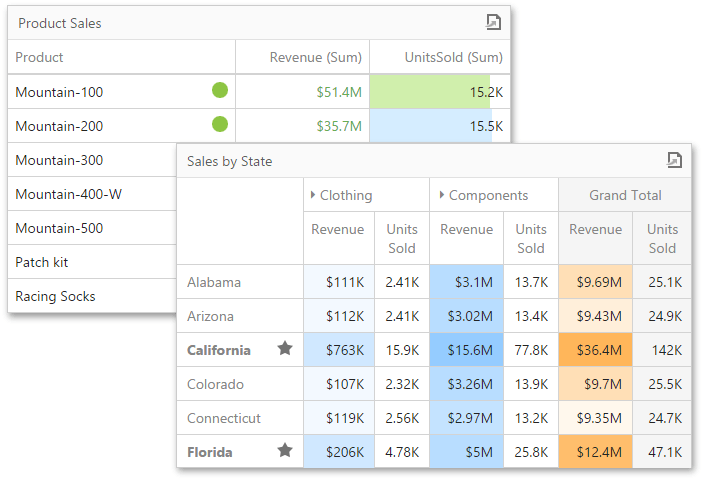
Format rules used in conditional formatting can be divided into groups depending on their purpose and can be applied to measure or dimension values.
Comparison rules used in conditional formatting can be divided into the following groups.
- Value - Allows you to compare static values (such as Greater Than, Less Than, Between, etc.).
- Top-Bottom - Highlights a specific number of topmost/bottommost values.
- Average - Highlights values above the average value or below the average value.
- A Date Occuring - Allows you to highlight date-time values that fall into a specified interval.
- Expression - Allows you to use complex conditions to apply formatting. You can also pass dashboard parameters to expressions.
- Icon and Color Ranges - Allows you to apply formatting by displaying specific icons for different ranges of values. You can select a predefined set of icons or use a specific icon for each range.
- Color Ranges - Allows you to apply formatting using specific colors for different ranges of values. You can select a predefined set of colors or use custom appearance settings to highlight values within specified ranges.
- Gradient Ranges - Allows you to apply formatting using gradient color scales.
- Bar - Allows you to visualize numeric values using bars. You can also color bars corresponding to positive and negative values using different colors.
- Bar Color Ranges - Allows you to visualize numeric values using bars whose colors are contained in the specified color set.
- Bar Gradient Ranges - Allows you to visualize numeric values using bars whose colors are contained in the specified color gradient.
You can create comparison rules for measures or dimensions. The table below lists format conditions that can be applied to different types of data items.
|
Data Item |
Supported Format Conditions |
|---|---|
| Measure/numeric Dimension |
Value
Top-Bottom Average Expression Icon Ranges Color Ranges Gradient Ranges Bar Bar Color Ranges Bar Gradient Ranges |
| string Dimension |
Value
with the condition type set to
Equal To,
Not Equal To
or
Text that Contains
Expression |
| date-time Dimension |
Value
A Date Occuring for dimensions with the continuous date-time group interval Expression Icon and Color Ranges Color Ranges Gradient Ranges Bar Bar Color Ranges Bar Gradient Ranges |
Create and Edit a Format Rule
To create a format rule, perform the following steps.
-
Select the required measure/dimension by whose values a format condition will be calculated, open the
Conditional Formating
section of the data item menu and click "+" to add a new format rule.
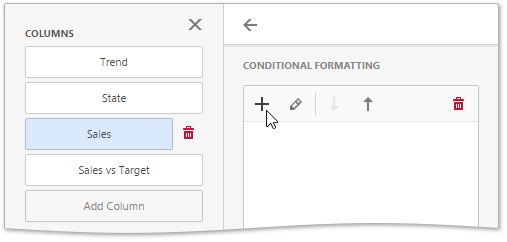
-
Specify the data item to which conditional formatting is applied using the
Apply to
combo box and select a condition type from the list.
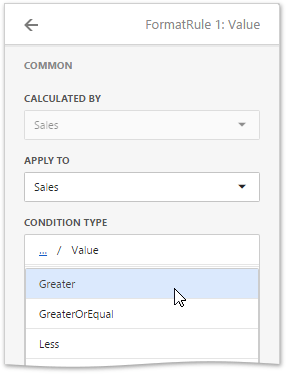
-
The format rule's menu is opened. This menu depends on the selected format condition and the type of the dashboard item. Here you can specify settings specific for the selected condition. For example, the
Value
format rule allows you to set a value that will be compared with dimension/measure values and specify a format rule style. The image below displays settings where values greater than 300M will be colored in pale green.
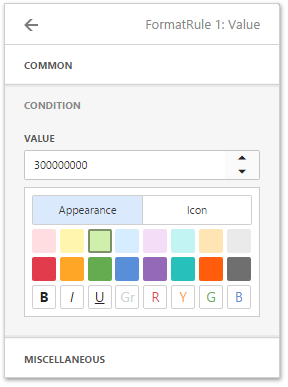
You can specify additional settings in the Miscellanous section of the format rule's menu. This section contains settings depending on the type of the dashboard item. For example, you can manually specify an intersection level for the Pivot or apply the current rule to a row in the Grid.
-
The format rule is now ready and will be applied to the dashboard item.
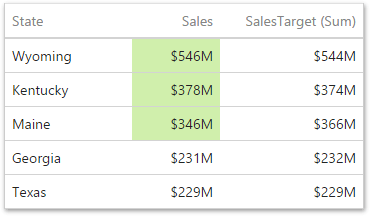
To edit a format rule, open the
Conditional Formatting
section of the
data item menu,
Edit
button (the
 icon). To delete the selected format rule, click the
Delete
button (the
icon). To delete the selected format rule, click the
Delete
button (the
 icon).
icon).
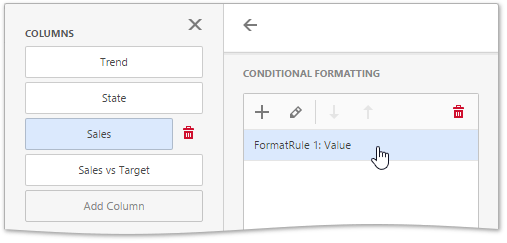
You can see existing format rules for the entire dashboard item. To do this, open the dashboard item's Options menu and go to the Conditional Formatting section.
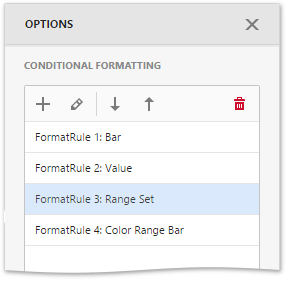
Appearance Settings
When creating a new format rule, you can select the required appearance settings in the Condition section of the format rule's menu. This settings applied according to the current format condition. All format conditions allow you to customize appearance settings in a similar manner.
For example, the Value format condition allows you to specify appearance settings in the following way...
-
The
Appearance
tab allows you to choose the predefined background color or font.
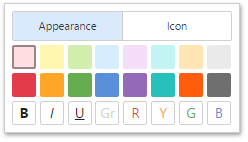
-
The
Icons
tab allows you to add the predefined icon.
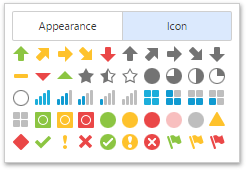
... while the different types of Range format rules allow you to customize predefined range colors and values.
